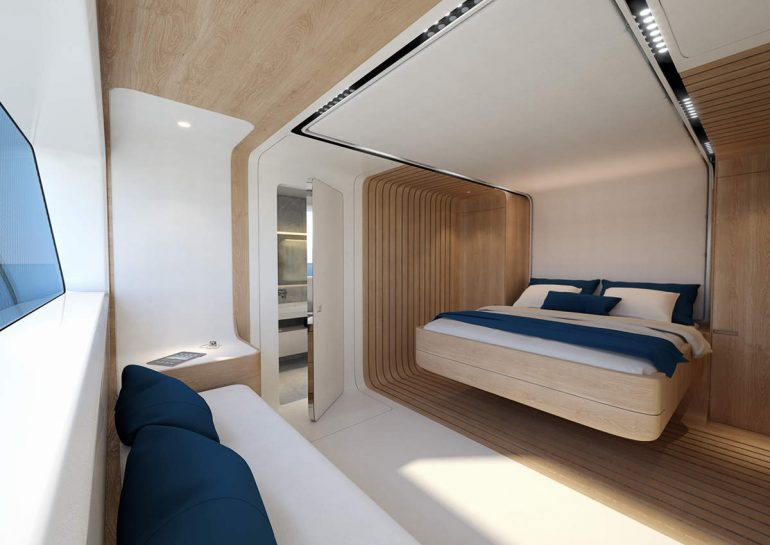Zaha Hadid Architects are going down the clean, green road with Italian yacht builder Rossinavi. The Oneiric catamaran is unlike anything we have set our sights on before. The concept is a shining example of the company’s commitment to green technology, fulfilled by incorporating large solar panels to fuel the catamaran via batteries underneath the expansive decks. Giving life to the idea of sustainable yachting is the beautiful vessel that looks almost sculptural with its curved forms. As per Amazing Architecture, Oneiric can cruise up to 100% of the time in full-electric mode with zero emissions. This champion of sustainability saves roughly 40 tonnes of CO2 (40,000 kilograms) compared to a conventional vessel.

This concept also flaunts energy-efficient multihulls due to their length-to-width ratio, which enhances hydrodynamic efficiency. Designboom shared, ‘This pursuit of environmental sustainability is driven by the desire to conserve the well-being of the ocean’s ecosystems. Rossinavi’s technological innovations and philosophy of sustainability are inspired by phytoplankton, a small marine algae that converts sunlight into energy and provides more than half of the Earth’s annual oxygen production. These billions of microscopic organisms remind us that, working together, we can all contribute to a healthier environment,’ explained the team at ZHA.

The team also talks about its interiors, which are the next best thing about Oneiric after its advanced sustainability features. They stated, ‘Multiple interior and outdoor lounging and dining areas, as well as media room with entertainment technologies, are integrated into the design together with a large owner’s suite and four guest cabins. The size of these areas is exceptional: the master bedroom enjoys a 180-degree view with a composition of skylights that allow light to filter in from above. The yacht’s interior spaces interconnect, a feature that makes the design unique. The owner’s suite provides access to the forward outdoor lounge area, which can be shaded by retractable structures.’
[Via : Designboom]














